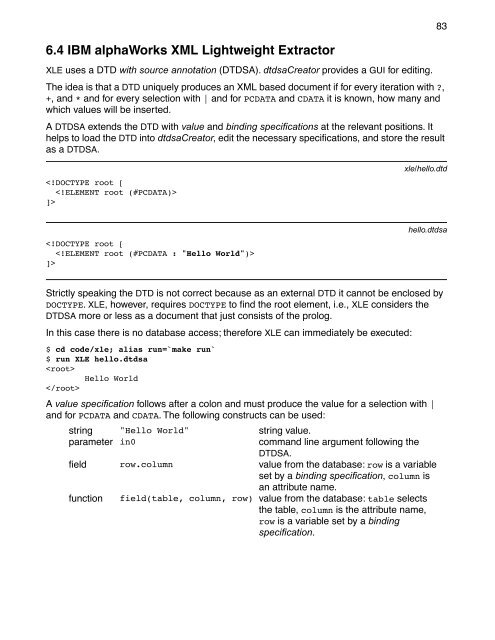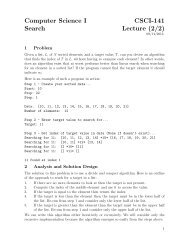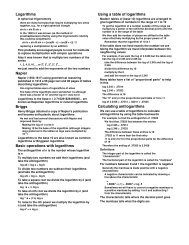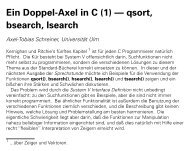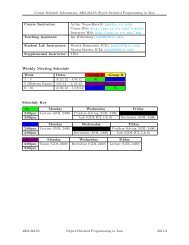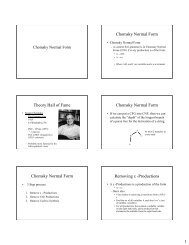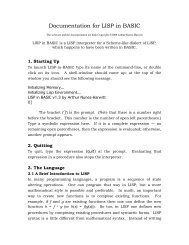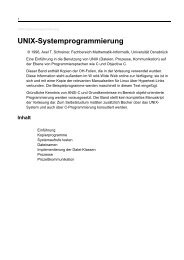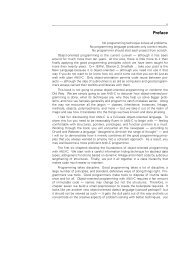XML — Architecture, Tools, Techniques - Department of Computer ...
XML — Architecture, Tools, Techniques - Department of Computer ...
XML — Architecture, Tools, Techniques - Department of Computer ...
You also want an ePaper? Increase the reach of your titles
YUMPU automatically turns print PDFs into web optimized ePapers that Google loves.
6.4 IBM alphaWorks <strong>XML</strong> Lightweight Extractor<br />
XLE uses a DTD with source annotation (DTDSA). dtdsaCreator provides a GUI for editing.<br />
The idea is that a DTD uniquely produces an <strong>XML</strong> based document if for every iteration with ?,<br />
+, and * and for every selection with | and for PCDATA and CDATA it is known, how many and<br />
which values will be inserted.<br />
A DTDSA extends the DTD with value and binding specifications at the relevant positions. It<br />
helps to load the DTD into dtdsaCreator, edit the necessary specifications, and store the result<br />
as a DTDSA.<br />
<br />
<br />
83<br />
xle/hello.dtd<br />
hello.dtdsa<br />
Strictly speaking the DTD is not correct because as an external DTD it cannot be enclosed by<br />
DOCTYPE. XLE, however, requires DOCTYPE to find the root element, i.e., XLE considers the<br />
DTDSA more or less as a document that just consists <strong>of</strong> the prolog.<br />
In this case there is no database access; therefore XLE can immediately be executed:<br />
$ cd code/xle; alias run=`make run`<br />
$ run XLE hello.dtdsa<br />
<br />
Hello World<br />
<br />
A value specification follows after a colon and must produce the value for a selection with |<br />
and for PCDATA and CDATA. The following constructs can be used:<br />
string "Hello World" string value.<br />
parameter in0 command line argument following the<br />
DTDSA.<br />
field row.column value from the database: row is a variable<br />
set by a binding specification, column is<br />
an attribute name.<br />
function field(table, column, row) value from the database: table selects<br />
the table, column is the attribute name,<br />
row is a variable set by a binding<br />
specification.


